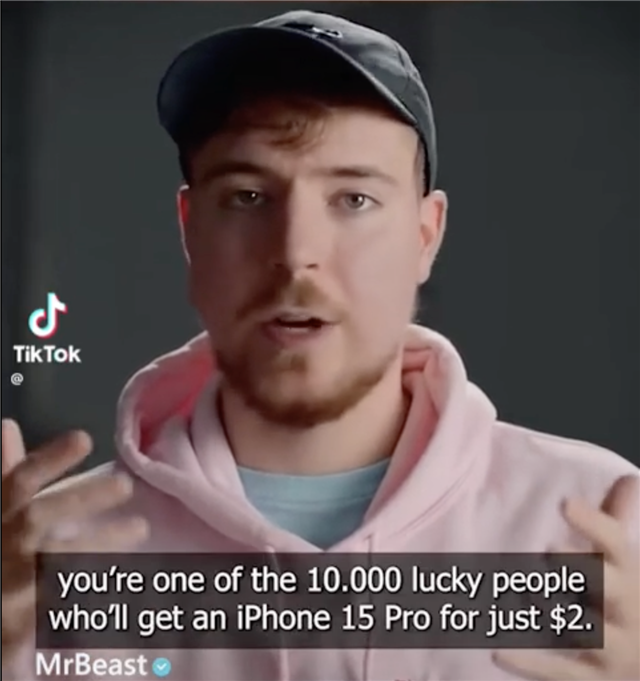Grab some coffee and have a scroll through CivAI’s latest newsletter! In this newsletter, we endeavor to make recent developments in AI as concrete as possible, with clear explanations and specific examples.
Have feedback for us? Don’t like our font? Want to nerd out about AI? We’d love to hear from you! Hit reply or email us at contact@civai.org.
In this newsletter:
OpenAI’s DALL-E 3 inches AI image generation closer to perfection
California’s executive order on AI gets the state government moving
AI’s nefarious side gig: pretending to be MrBeast on TikTok
AI Image Generation Inches Towards Perfection
AI image generation has taken another leap with OpenAI’s new DALL-E 3.
Early image generators like the original DALL-E were shocking because they were able to interpret human concepts to produce images that were recognizable to us. For example, the original DALL-E was able to imagine what an armchair shaped like an avocado would look like.
With DALL-E 3, AI-generated images are inching towards perfection. The images are more realistic and more precise in representing exactly what you ask for. We gave DALL-E 2 (the previous version, from 2022) and DALL-E 3 the same prompt from which to generate an image:
Under a full moon, the city street bustles with pedestrians. A young woman with fiery red hair and a velvet cloak haggles with a vendor. He is sophisticated, wearing a sharp suit and a noteworthy mustache.


Much of the improvement in AI image generation from the past few years can be attributed to one thing: size.
With modern AI technology, we’ve learned time and time again that the bigger you make the AI’s “brain” (aka neural network), the more capacity it has to learn. Last year, Google showed that if you make image generation AIs of various sizes, from roughly 350 million “neurons” (aka parameters) to 20 billion, the larger AIs are much better:

We don’t actually know how big DALL-E 3 is, but given its prowess, it very well could be the biggest image AI to date. Try DALL-E 3 for free on Microsoft’s Bing Image Creator.
Governor Newsom Issues Executive Order On AI
Governor Newsom has issued an executive order in which he wants the California state government to prepare for using GenAI (that’s Generative AI for those in the back).
GenAI is brand new—ChatGPT hasn’t even had its first birthday yet. In light of that, the most prominent policy efforts, like this one, are preferring to lay groundwork for more opinionated efforts in the near future.
In Governor Newsom’s words, “We’re taking a clear-eyed, humble approach to this world-changing technology. Asking questions. Seeking answers from experts.”
So what exactly does this order ask the California state government to do?
Find cool uses for GenAI. Like automatically categorizing trends in public comments. Let AI be the one to sift through a hundred passionate arguments about zoning.
Spot the risks. Support chatbots could be tricked into divulging sensitive info. Automated support systems could be less accessible to elderly populations. And, perhaps more damagingly, GenAI could be used by criminals to find vulnerabilities in the state’s critical software infrastructure.
Set guidelines for procurement and training. Perhaps if an AI tool can't survive a simulated cyber onslaught (sometimes called red-teaming), it shouldn’t be getting an invite to the party.
Make it easy to conduct pilot programs. For example by putting agreements in place with vetted GenAI vendors.
The governor is moving quickly. Much of the prep work in the executive order is to be completed by March 2024, less than 6 months from now. Teams across the state will be working with GenAI in short order.
Deepfake Scam Impersonates YouTuber MrBeast
MrBeast is the most followed (and highest paid) person on YouTube. His shtick is holding extravagant giveaways, everything from a private island to a car dealership where all the cars were free. In other words, Santa Claus for Gen Z.
Recently, a fake AI-generated video appeared on TikTok in which he says, “If you’re watching this video, you're one of the 10,000 lucky people who'll get an iPhone 15 Pro for just $2.”

It sounds too good to be true, but hey, this is MrBeast. He probably finds iPhone trees and harvests them. So when a hyper-realistic video like this appears on social media, it feels entirely plausible.
The video is the product of increasingly powerful and accessible “deepfake” technology. A far cry from the blurry videos of faked alien sightings that we used to see, AI deepfakes are a dream tool for cybercriminals looking to exploit public trust.
The FBI reports that the public lost upwards of $10 billion in the past year due to cybercrime (and that’s only reported losses). With AI donning its black hat, those numbers could balloon, especially since the underlying technology is improving by the day.
There are already dozens of apps and websites for creating these AI-generated videos with just a few clicks. Watch the MrBeast video to see just how convincing they have become.
You just read issue #1 of Updates from CivAI. You can also browse the full archives of this newsletter.
